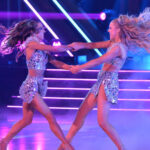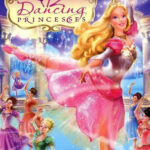For those who find epics like “Lawrence of Arabia,” “Patton,” or “Seven Samurai” captivating, the notion that “Dances With Wolves” is long and boring simply misses the point. This 1990 cinematic masterpiece, directed by and starring Kevin Costner, thrives on long-form storytelling, character development, and immersive drama, reminiscent of works by David Lean or Francis Coppola. And a significant part of its enduring appeal lies in the exceptional Cast Dances With Wolves brought to life. Far from being a quick-paced, explosion-filled spectacle, “Dances With Wolves” offers a rich narrative experience, deeply enhanced by the compelling performances of its actors.
Costner not only directed with a masterful hand, seamlessly blending intimate moments with grand, sweeping action, but he also assembled a cast dances with wolves that felt utterly authentic. The film’s success isn’t solely attributed to its beautiful cinematography or poignant score; it’s equally, if not more, about the actors who embodied their roles so convincingly. When we talk about the cast dances with wolves, we’re talking about performances that transcend mere acting and become genuine portrayals of character and emotion.
Leading the cast dances with wolves is Kevin Costner himself as Lieutenant John Dunbar. Costner’s portrayal is nuanced and compelling, drawing the audience into Dunbar’s journey of isolation and eventual integration into the Lakota tribe. He doesn’t just play Dunbar; he inhabits him, showcasing a character arc that is both believable and deeply moving. Alongside Costner, Mary McDonnell delivers a powerful performance as Stands With A Fist. Her portrayal of a white woman raised by the Lakota is both sensitive and strong, adding layers of complexity to the narrative and enriching the dynamic within the cast dances with wolves.
The film truly shines in its depiction of the Lakota people, thanks to the remarkable actors who formed a crucial part of the cast dances with wolves. Graham Greene as Kicking Bird provides a wise and dignified presence, acting as a bridge between Dunbar and the Lakota culture. Rodney Grant as Wind In His Hair is equally impactful, portraying a proud and initially wary warrior who evolves to respect and befriend Dunbar. Tantanka, as Elder Ten Bears, commands the screen with gravitas and authenticity, embodying the wisdom and leadership of the Lakota elders. These performances are not just supporting roles; they are integral to the heart and soul of “Dances With Wolves,” contributing significantly to why the cast dances with wolves is so celebrated.
Critics who dismiss “Dances With Wolves” as politically correct often miss the point of these performances. The film doesn’t just portray Native Americans; it presents them as fully realized characters with depth, emotion, and agency. This respectful and nuanced portrayal is largely thanks to the dedication and talent of the cast dances with wolves, who brought these characters to life with such authenticity and dignity.
In conclusion, the enduring power of “Dances With Wolves” is undeniable, and a significant portion of its impact stems from its exceptional cast dances with wolves. These actors didn’t just perform roles; they embodied characters, bringing depth, emotion, and authenticity to a story that continues to resonate with audiences. From Costner’s nuanced portrayal of Dunbar to the powerful performances of McDonnell, Greene, Grant, and Tantanka, the cast dances with wolves is a masterclass in ensemble acting, elevating the film to classic status and ensuring its place in cinematic history.


